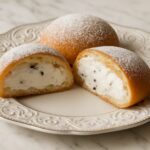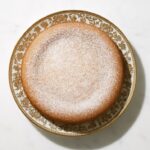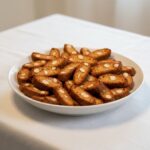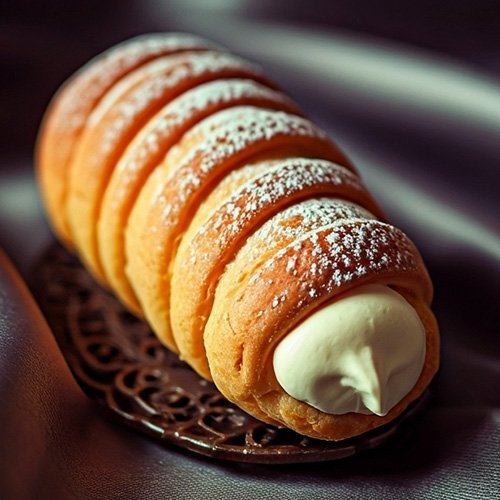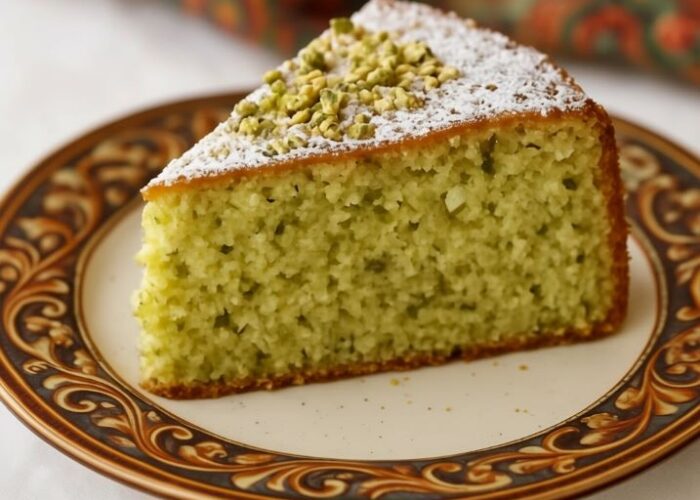What is the Hard Ball Stage?
If you’ve ever tried making torrone (or any homemade candy), you’ve probably come across the term “hard ball stage.” It might sound a little technical and honestly, a bit mysterious but don’t worry. It’s actually pretty simple once you understand what’s going on.
The hard ball stage is one of several key points in candy making where sugar syrup reaches a specific temperature — in this case, between 250°F and 266°F (121°C to 130°C). That might sound oddly precise, but those numbers really do make a difference in the final texture of your candy.
Here’s a quick trick: if you drop a spoonful of the hot syrup into a bowl of cold water, it’ll form a firm little ball. It holds its shape when you pick it up, but it’s still got a bit of give — kind of like a soft jawbreaker or a chewy caramel.
Not too squishy, not rock hard. Just right.
Hitting the hard ball stage is what gives certain candies that perfect balance, firm enough to hold together, but soft enough to bite into. It’s especially important in recipes like:
- Torrone (that dreamy Italian nougat)
- Chewy caramels
- Marshmallows
- Old-school fudge or divinity
In something like chocolate torrone, this stage is what gives it that signature bite: solid enough to slice, but still light and just a little chewy. You don’t want it melting into a puddle or snapping like brittle, the hard ball stage helps you land right in the sweet spot.
How Do You Know You’re There?
There are a couple of easy ways to check:
Option 1: Use a Candy Thermometer
This is the most accurate way. Just clip the thermometer to your pot and keep an eye on it. Once it hits between 250°F and 266°F, you’re in the zone.
Option 2: The Cold Water Test
Don’t have a thermometer? No problem. Just drop a bit of the syrup into a bowl of cold water. If it forms a firm, shapable ball that you can press gently without it falling apart, you’ve nailed it.
Be careful, hot sugar burns fast, so take it slow and safe.
Learning how to recognize the hard ball stage might sound like candy-making wizardry at first, but once you get the hang of it, it becomes second nature. Whether you’re making classic torrone or experimenting with other chewy sweets, understanding sugar stages is the secret to getting the texture just right. Now that you know what to look for, you’re already one step closer to homemade candy success.
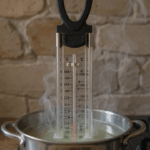
Hard Ball Stage
Temperature: 250°F to 266°F (121°C to 130°C)
What it looks like: When a small amount of the hot syrup is dropped into cold water, it forms a firm ball that holds its shape but is still pliable (you can press it slightly without it crumbling or flattening).
Texture in candy: Candies cooked to this stage are firm, chewy, and retain their shape — perfect for nougats, marshmallows, caramels, and chocolate torrone.
Matters for Torrone
In Chocolate Torrone, cooking the honey-sugar mixture to the hard ball stage is crucial. It gives the nougat its structure — not too soft like taffy, but still tender and chewy. Undercooking makes it too soft; overcooking makes it hard and brittle.
Always use a candy thermometer to ensure accuracy, and avoid stirring once the sugar dissolves, as that can cause crystallization.
Candy Temperature Chart
| Sugar Stage | Temperature (°F) | Temperature (°C) | Water Test Result | Candy Examples |
| Thread Stage | 215°–235°F | 102°–113°C | Thin syrup threads, doesn’t form a ball | Sugar syrups, glazes |
| Soft Ball Stage | 235°–245°F | 113°–118°C | Soft, pliable ball in water | Fudge, pralines |
| Hard Ball Stage | 250°–266°F | 121°–130°C | Firm, holds shape, slightly pliable | Torrone, caramels, marshmallows |
| Soft Crack Stage | 270°–290°F | 132°–143°C | Brittle threads that bend | Butterscotch, taffy |
| Hard Crack Stage | 300°–310°F | 149°–154°C | Brittle, shatters easily | Lollipops, brittle, toffee |
| Caramelized Sugar | 320°–350°F | 160°–177°C | Turns amber; no water test | Caramel, spun sugar |
How to Test Candy Stages Without a Thermometer
No candy thermometer? No problem! You can still determine sugar stages using the classic cold water test. It’s a reliable, old-school method that helps you check if your syrup is at the soft ball, hard ball, soft crack, or hard crack stage — all essential for different types of candy like torrone, caramels, and brittles.
What You’ll Need:
A small bowl of very cold water
A clean spoon or dropper
Careful hands (sugar syrup is extremely hot!)
Step-by-Step: Cold Water Test
Prepare Your Setup
Fill a small bowl with ice-cold water and keep it near your stovetop. Have a spoon ready to collect the hot syrup.
Drop the Syrup
Carefully dip your spoon into the boiling syrup. Drop a small amount of syrup into the cold water.
Let it cool for a few seconds in the water before touching or testing it.
Check the Texture
Here’s how to identify which stage your syrup has reached:
Soft Ball Stage (235°–240°F / 113°–116°C):
The syrup forms a soft, squishy ball that flattens easily when pressed.
➤ Great for fudge and fondant.
Hard Ball Stage (245°–265°F / 118°–129°C):
The syrup forms a firm, round ball that holds its shape but is still a little pliable.
➤ Perfect for torrone, nougat, and chewy caramels.
Soft Crack Stage (270°–290°F / 132°–143°C):
The syrup forms flexible threads that bend before snapping.
➤ Used for butterscotch and some hard candies.
Hard Crack Stage (300°–310°F / 149°–154°C):
The syrup hardens into brittle, glass-like threads that break when bent.
➤ Ideal for brittles, lollipops, and toffee.
Safety Reminder
Always use caution when working with hot sugar syrup — it can cause severe burns. Let the syrup cool slightly in the water before touching it. Never touch boiling sugar directly.






